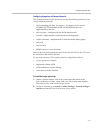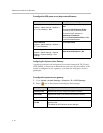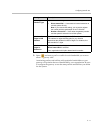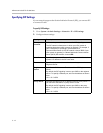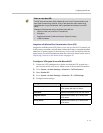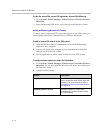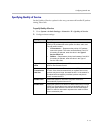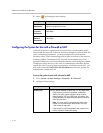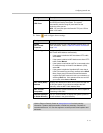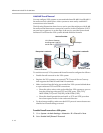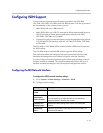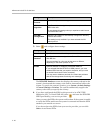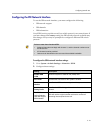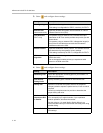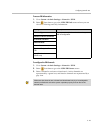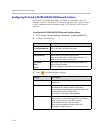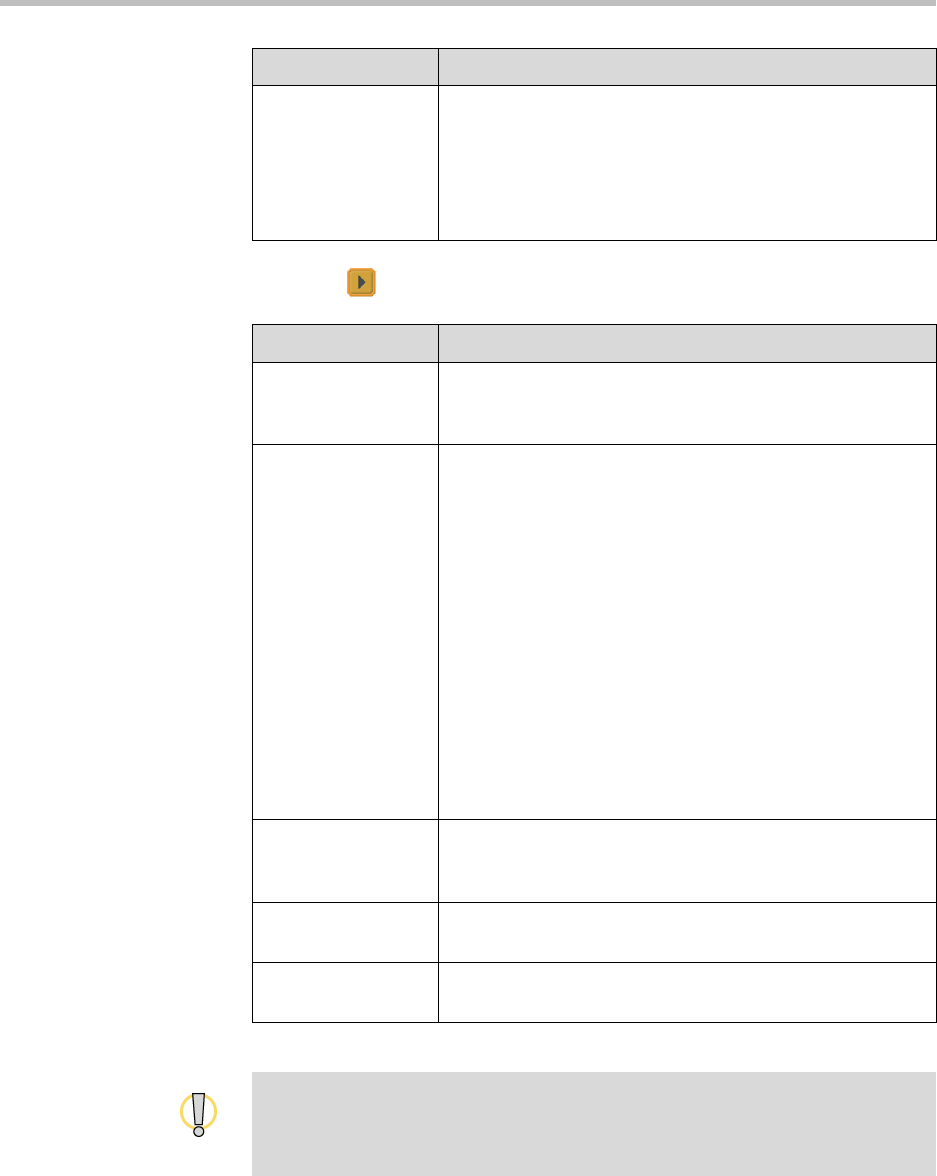
Configuring Network Use
3 - 17
3. Select and configure these settings:
TCP Ports
UDP Ports
Lets you specify the beginning value for the range of TCP
and UDP ports used by the system. The system
automatically sets the range of ports based on the
beginning value you set.
Note: You must also open the firewall’s TCP port 1720 to
allow H.323 traffic.
Setting Description
Setting Description
Enable
NAT/Firewall
Traversal
Allows the system to use H.460-based firewall traversal. For
more information, refer to H.460 NAT Firewall Traversal on
page 3-18.
NAT Configuration Lets you specify whether the system should determine the
NAT Public WAN Address automatically.
• If the system is behind a NAT that allows HTTP traffic,
select Auto.
• If the system is behind a NAT that does not allow HTTP
traffic, select Manual.
• If the system is not behind a NAT or is connected to the
IP network through a Virtual Private Network (VPN),
select Off.
• If the system is behind a firewalled NAT router that is
UPnP (Universal Plug and Play) certified, select UPnP.
Many routers used in homes and small businesses
support UPnP NAT traversal. If this is your situation, try
selecting UPnP first. If this selection does not work for
your router, select Auto or Manual.
NAT Public (WAN)
Address
Displays the address that callers from outside the LAN use
to call your system. If you chose to configure the NAT
manually, enter the NAT Public Address here.
NAT is H.323
Compatible
Specifies that the system is behind a NAT that is capable of
translating H.323 traffic.
Address Displayed
in Global Directory
Lets you choose whether to display this system’s public or
private address in the global directory.
Visit the Polycom Security Center at www.polycom.com for timely security
information. Systems deployed outside a firewall are potentially vulnerable to
unauthorized access. You can also register to receive periodic email updates and
advisories.



